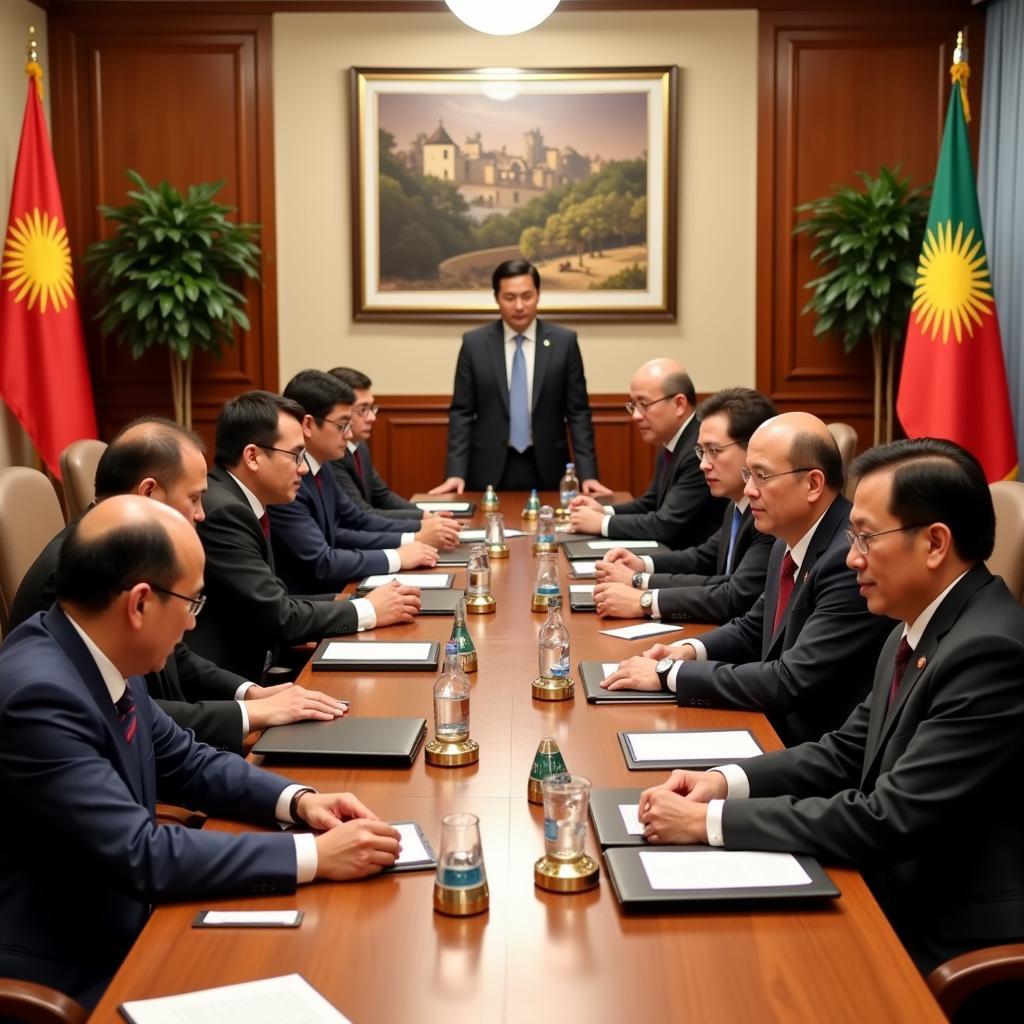The Asea Game, more formally known as the Southeast Asian Games, is a biennial multi-sport event involving participants from the 11 countries of Southeast Asia. The games, held under the regulation of the Southeast Asian Games Federation with supervision by the International Olympic Committee (IOC) and the Olympic Council of Asia, represent a celebration of athleticism, sportsmanship, and regional unity.
A Tapestry of Sports and Cultures
The ASEA Game stands as a testament to the diverse sporting landscape of Southeast Asia. Athletes compete in a wide array of sports, ranging from Olympic staples like athletics, swimming, and gymnastics to regional favorites like sepak takraw, pencak silat, and wushu. This unique blend of sports reflects the rich cultural heritage and sporting traditions of the region.
A Platform for Regional Cooperation
Beyond the competitive spirit, the ASEA Game plays a pivotal role in fostering cooperation and understanding among the nations of Southeast Asia. The event brings together athletes, coaches, officials, and fans from diverse backgrounds, fostering a sense of shared identity and regional pride. This shared experience contributes to strengthening diplomatic ties and promoting peace and stability in the region.
The games also serve as a catalyst for the development of sports infrastructure and expertise within Southeast Asia. Hosting the games encourages investment in sporting facilities, coaching programs, and athlete development initiatives, leaving a lasting legacy for future generations.
The Evolution of the ASEA Game
Since its inception in 1959, the ASEA Game has undergone significant transformation, reflecting the growth and development of Southeast Asia. From a relatively small-scale event, it has evolved into a major sporting spectacle attracting global attention. The increasing professionalism of the games is evident in the rising standards of competition and the emergence of world-class athletes from the region.
The ASEA Game and National Identity
The ASEA Game holds immense significance for the participating nations, often serving as a source of national pride and unity. Success at the games can ignite national celebrations and elevate the status of athletes to national heroes. The games provide a platform for athletes to showcase their talent and dedication on an international stage, inspiring younger generations and fostering a love for sports.
Looking Ahead: The Future of the ASEA Game
As Southeast Asia continues to evolve, so too will the ASEA Game. The event is expected to attract even greater participation and viewership in the coming years, further cementing its position as a premier sporting event. The games will continue to play a crucial role in promoting regional cooperation, cultural exchange, and the development of sports in Southeast Asia.
Frequently Asked Questions About the ASEA Game
1. When was the first ASEA Game held?
The inaugural ASEA Game took place in 1959.
2. How many countries participate in the ASEA Game?
Eleven Southeast Asian countries participate in the games.
3. What are some of the popular sports in the ASEA Game?
Popular sports include athletics, swimming, sepak takraw, pencak silat, and wushu.
4. Where is the next ASEA Game being held?
Information about future host countries can be found on the official ASEA Game website.
5. How can I watch the ASEA Game?
Broadcasting details are typically announced closer to the games.
Need More Information?
For any inquiries or assistance, please contact our 24/7 customer service team at Phone Number: 0369020373, Email: [email protected] or visit our office located at Thon Ngoc Lien, Hiep Hoa, Bac Giang, Vietnam. We’re here to help you!


